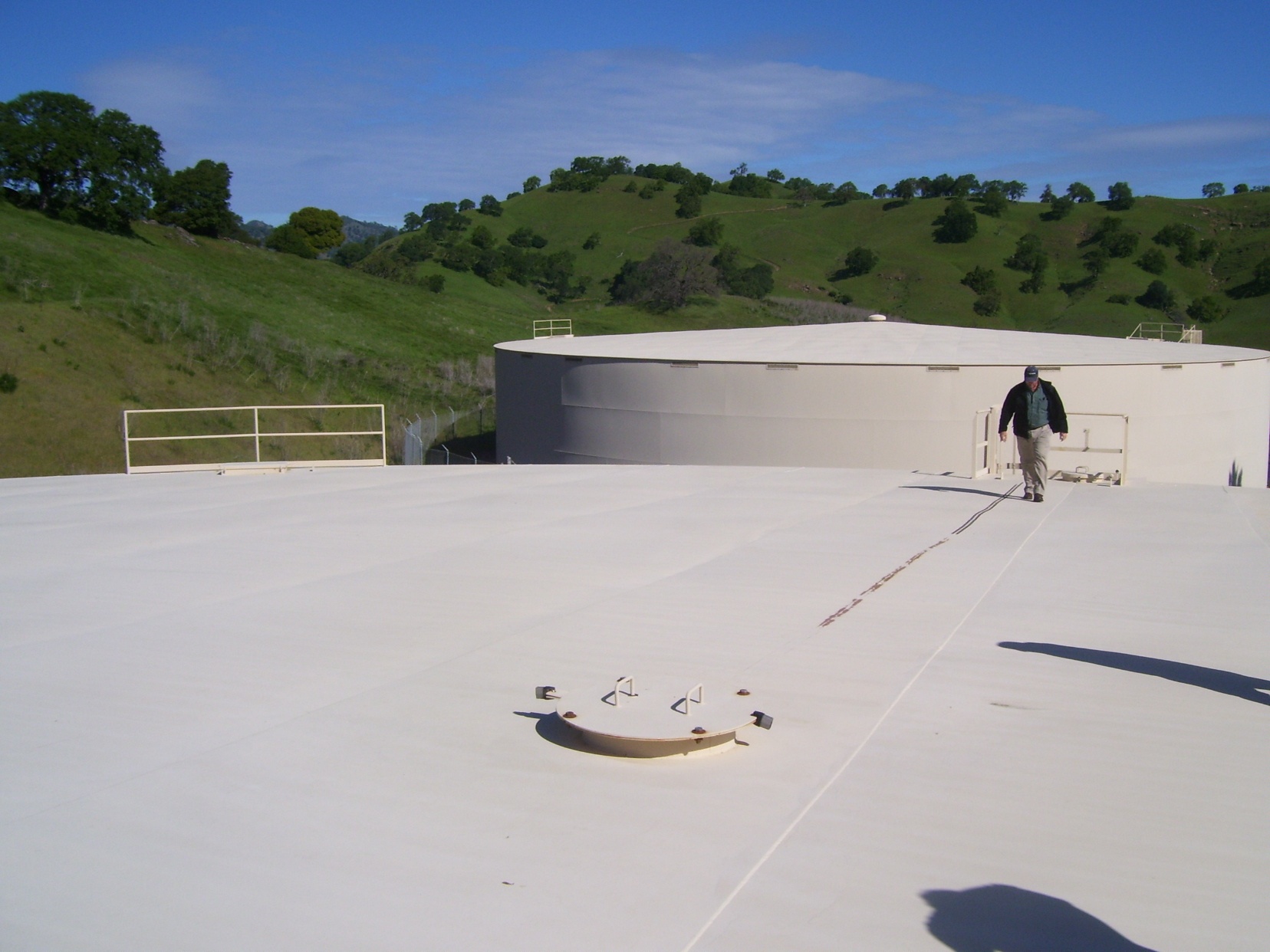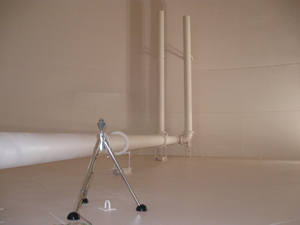[Byline] WaterWorld - Power Makes the Difference in Active Mixing
 Mixing in potable water storage tanks is increasingly recognized as an important factor in improving water quality and protecting tank assets. Thorough mixing eliminates thermal stratification and ensures uniform conditions in tanks which has been shown to lower overall disinfectant residual demand and reduce the risk of nitrification. Additionally, mixing can protect and preserve tank assets by preventing the formation of ice (which can scrape tank coatings or puncture tanks), and lower summertime headspace temperatures (which reduces corrosion rates.)
Mixing in potable water storage tanks is increasingly recognized as an important factor in improving water quality and protecting tank assets. Thorough mixing eliminates thermal stratification and ensures uniform conditions in tanks which has been shown to lower overall disinfectant residual demand and reduce the risk of nitrification. Additionally, mixing can protect and preserve tank assets by preventing the formation of ice (which can scrape tank coatings or puncture tanks), and lower summertime headspace temperatures (which reduces corrosion rates.)
But how much mixing is “enough" for each application? And how does tank size and shape affect the power needed to completely mix a tank? While there are many mixing technologies now available in the market, their power and capabilities vary widely. In order to select the right technology, you have to first understand how much mixing power you need.
Pumping Rate
Mixers circulate water throughout a tank and can be characterized by a pumping rate, usually in the range of hundreds to thousands of gallons-per-minute. While a mixer's impeller may create a small jet of high velocity water, most of the pumping comes from how that jet entrains and mixes with the surrounding water. The total fluid movement (direct and indirect) that the mixer produces is the pumping rate.
In order to determine the total pumping rate that a mixer produces, a computational fluid dynamics (CFD) model needs to be developed and run. These models are useful, but in order to be quantitatively accurate, they must be compared to and calibrated with experimental data gathered from actual water tanks. Thus, it is a good idea to require manufacturers not only to include the results of CFD, but also the experimental data to back it up as part of each submittal.
Thermal Stratification
thermal stratification occurs in most tanks at some point during the year. Because nearly all tanks have a common inlet and outlet (at or near the bottom of the tank) warm water can become trapped in the top of the tank leading to high water age and residual loss. Thorough mixing can break through this stratified layer of warm water and blend the entire contents of the tank.
Keeping a thermally homogeneous tank well-mixed does not require much mixing power - There is little or no thermal gradient for the water to fight against. But if a tank is initially thermally stratified, or becomes stratified due to the influx of a pulse of colder water, mixer power is critical. Lifting the cold water off the floor of the tank and pushing it all the way up through the layers of warmer water at the top requires a strong jet. Unfortunately, some mixing systems are simply too feeble to do it. In considering various technologies, it's a good idea to ask the manufacturer for temperature profile data that shows how quickly their mixer can take a tank from initially stratified condition to a fully-mixed condition. This is called the blend time. The faster the blend time, the more powerful the mixer.
Ice Formation
in cold climates ice forms at the top of water tanks each winter. Depending on the average temperature and the tank turnover, the ice can range from a thin skin to a massive iceberg. Water is an unusual liquid because it becomes less dense as it cools down to temperature close to the freezing point. Warmer water that enters the bottom of the tank(up to about 40 degrees Fahrenheit) is actually more dense than the colder water at the top this prevents mixing and allows the ice at the top to thicken.
the tank turnover, the ice can range from a thin skin to a massive iceberg. Water is an unusual liquid because it becomes less dense as it cools down to temperature close to the freezing point. Warmer water that enters the bottom of the tank(up to about 40 degrees Fahrenheit) is actually more dense than the colder water at the top this prevents mixing and allows the ice at the top to thicken.
You do not want ice to form in your tank even a relatively small chunk of ice can ride up and down on the walls of your tank scraping off the coating and (in extreme cases) puncturing the wall. Furthermore, the presence of any ice indicates an incompletely mixed tank. Ice formation in the top of the tank also causes the air in the headspace above to become even colder - which can cause frost to form in the air vents. If these vents become plugged your tank can implode on the next drain cycle.
Ice prevention requires a powerful mixer. In general, a mixer that turns the tank over at least eight times a day is a good bet, but weather conditions, tank turnover and the temperature of the inlet water are also important factors to consider.
Tank Shape
Most people would understand that the larger the tank, the greater the mixer power required. But most people are surprised to learn that the tank shape is probably more important. Tall, skinny tanks (i.e. standpipes) are the most prone to thermal stratification and ice formation because water can most easily become trapped and isolated at the top. If you're considering mixing for your standpipes, be sure to check out how the various technologies perform in similar shape tanks.
Conclusion
Most mixing technologies are similar in price. However, the pumping rate of differences systems can vary by as much as a factor of 10. Be sure to compare apples-to-apples when you examine mixing systems, and make sure you are specifying a mixer that is up to the task.
About the Authors
Peter S. Fisk is CEO of Pax Water and Randy Moore is VP of Specialty Products at Utility Service Company.



